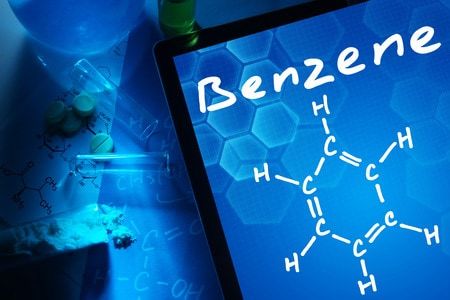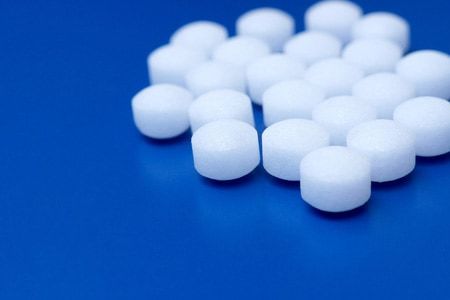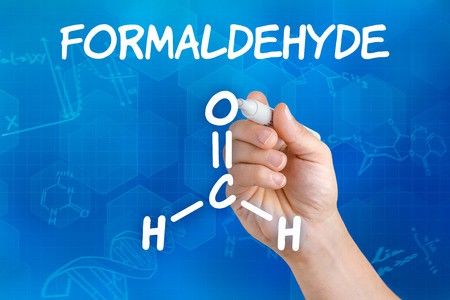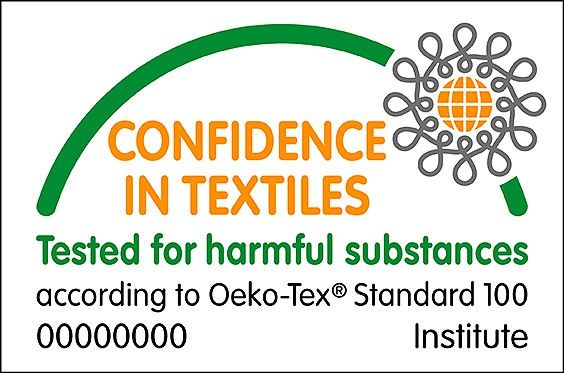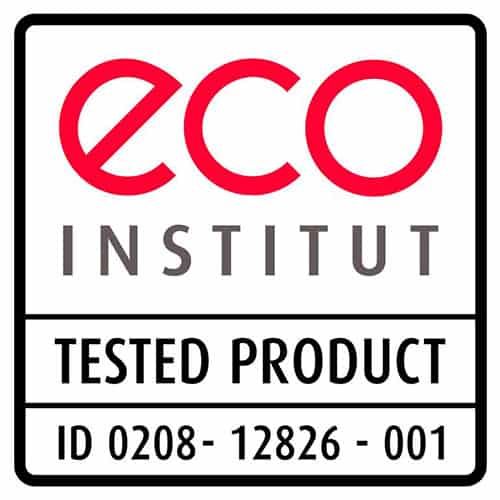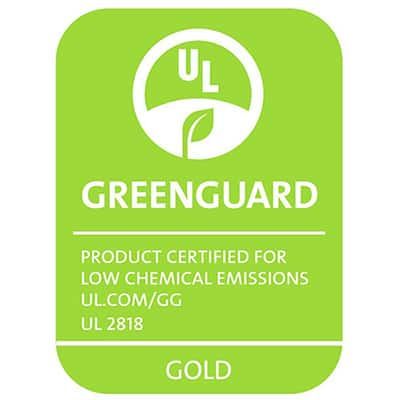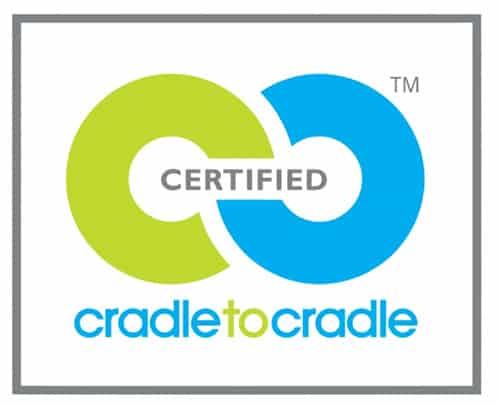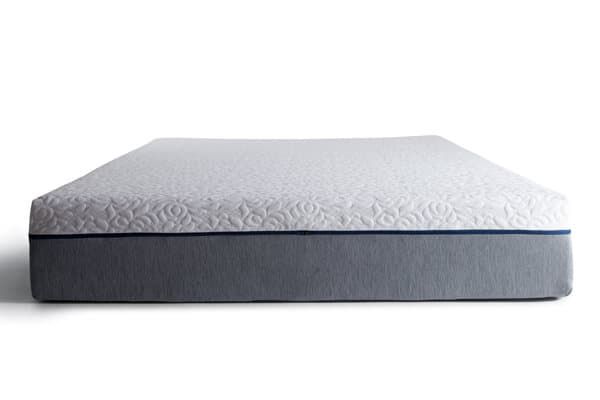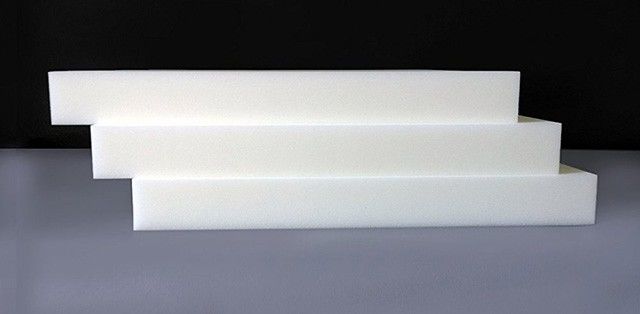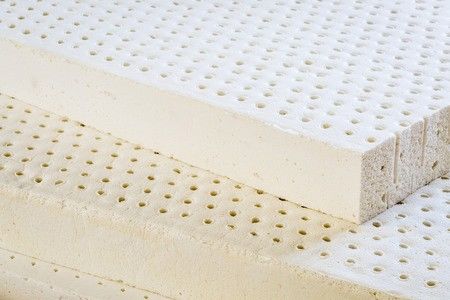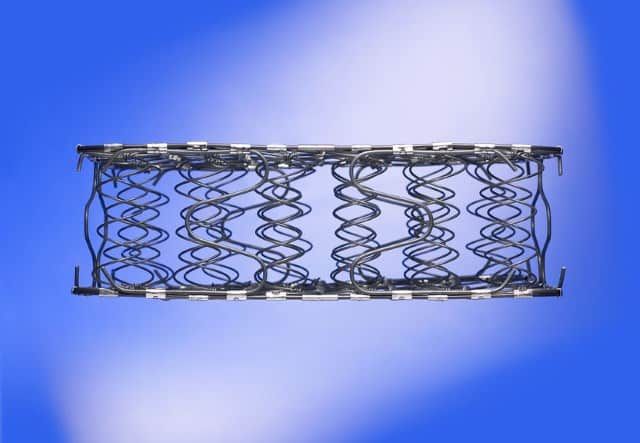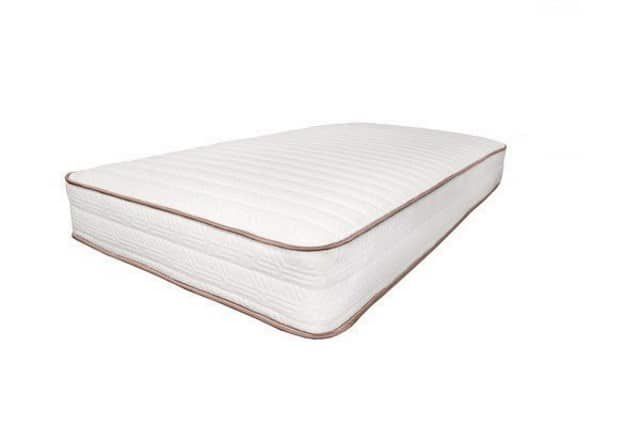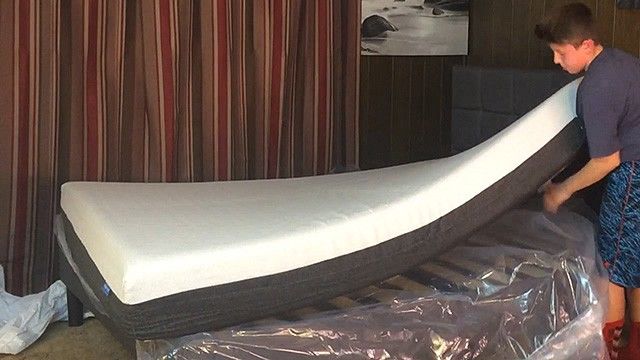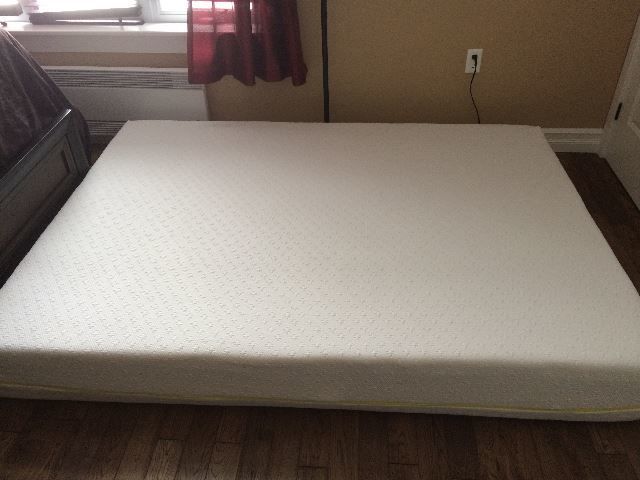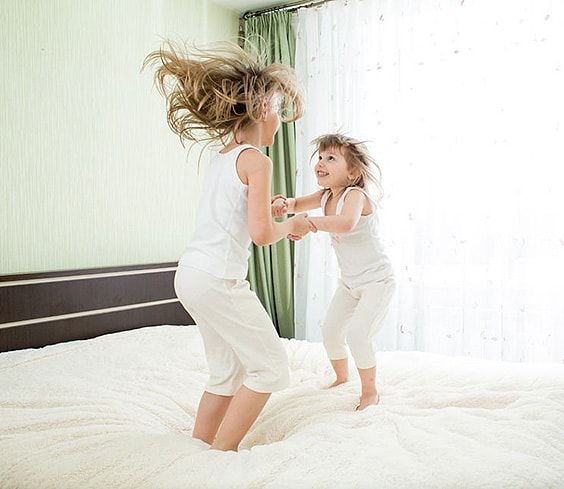Have you ever opened up a new memory foam product and noticed a funky chemical smell coming from it? If so, chances are that your mattress is made with synthetic foams that contain petroleum based chemicals and fire-retarding agents. These chemicals contain fumes that can cause some allergic reactions to those with chemical sensitivities.
Fortunately, not all mattresses are going to emit these ill-smelling odors, but if you do happen to own a mattress that is presenting you with these chemical smells, there are ways to get rid of them and things you can look for before you purchase your mattress to avoid the smell all together.
Is Off-Gassing Dangerous?
One of the first questions that a lot of people find themselves asking is whether or not off-gassing is dangerous to their health. All around your home you will encounter materials that off gass such as dryer sheets, particle board, laser printers, non-stick pans, cleaners, and then there’s the mattresses. Inside of certain mattresses, especially those of a synthetic nature, you may find benzene, naphthalene, and formaldehyde.
These names sound scary, but I can assure you that they aren’t when they are present in your mattress. The amount of chemicals that are emitted isn’t high enough to cause harm to you and they dissipate after a short period of time. Most of these chemicals are found in the fire retardant sock that is wrapped around the mattress on the inside, found in the adhesive that is used to keep the layers of the foams together, or naturally used in the manufacturing process when making the mattress.
Benzene
Benzene is one of the 20 most widely used chemicals in the United States and is used in materials such as dyes, detergents, drugs, pesticides, lubricants, and so much more. It is a colorless and flammable liquid with a sweet odor to it that evaporates rather quickly when it is exposed to the air. It is mostly formed from natural processes such as forest fires and volcanoes, but most of the exposure to benzene is the result from human activities.
Naphthalene
Naphthalene itself is made from coal tar or crude oil and is produced when things burn. When it is used in mattresses, it isn’t very potent and doesn’t have an ill effect on humans in small doses. It’s commonly used in the manufacturing process for the synthetic fibers in the foams.
Formaldehyde
Formaldehyde has a very recognizable smell and you’ll know it as soon as you take a whiff. The pickle-like scent of this colorless chemical is very commonly used in a lot of manufacturing processes and it becomes a gas very easily at room temperature, which is what turns it into a larger group of chemicals known as VOC’s. In mattresses, however, these VOC’s are very low.
If you are exposed to formaldehyde, it could cause a series of health effects on certain individuals and the severity of the symptoms all depend on how much you are exposed to and for how long. Some of the short-term immediate symptoms include:
- Coughing
- Headache
- Dizziness
- Nausea
- Eye, nose, and throat irritation
There are certain individuals that do have a sensitivity to this chemical, so if you have a reaction to it, these are the symptoms that you would most likely encounter.
Testing For Volatile Organic Compounds (VOC’s)
Volatile Organic Compounds are present in natural and synthetic materials. They are measured by collecting samples and being submitted for analysis in the lab by the use of certain techniques such as GC-MS. This process is meant to ensure that nothing harmful or toxic is present. There are various VOC indoor air quality certifications that a product can have to ensure that there aren’t dangerous levels of VOC’s being emitted by the product:
- Oeko-Tex Certification: This certification is used mainly in latex mattresses, but it is also a safety testing standard that tests for harmful substances that can come out of a mattress. It also tests for harmful VOC’s.
- Eco-Institut Certification: This is a certification that tests for harmful substances and VOC’s. They also test for durability and natural latex content.
- Greenguard Gold: This safety standard test ensures that there are low levels of harmful VOC’s. This test is for a complete mattress rather than just one component.
- Cradle to Cradle: This is a new certification that tests for harmful VOC’s and environmental & social impacts of the process of production.
- GOLS Certified: This is a new standard that applies more specifically to latex. This certifies that the latex is made with raw organic materials.
If you come across a mattress that has one or more of these certifications, it’s a keeper. It means that the bed is safe for sleeping and isn’t going to release a harmful amount of VOC’s or other chemicals.
Dangers For Children
It’s not only adult mattresses that emit gasses, it’s also crib mattresses as well. Crib mattresses contain PVC, which is one of the most environmentally hazardous materials that has ever been produced.
When searching for a crib mattress, it’s best to find one that’s eco-friendly, CertiPUR-US Certified, or organic. These mattresses are low in VOC’s and may not contain polyurethane or phthalates. These are the safest ones for your child to sleep on that will keep them away from those harmful off-gassing chemicals.
Mattresses That Off-Gas
Different mattresses contain different levels and possibilities for off-gassing, depending on what they are made from.
Are Memory Foam Mattresses Safe?
Memory foam mattresses are one of the most common types of beds and toppers that emit off-gassing scents. Most of the time, regular memory foam mattresses have 5-6” of polyurethane foam, which has the ability to cause certain reactions in people with chemical sensitivities. The polyurethane layer will most likely be topped with a visco elastic-layer that will also off-gas.
One way you can ensure that the VOC’s will be at a low level is to check for the GREENGUARD Certification and a CertiPUR-US Certification. These ensure that the mattress is made with materials that aren’t harmful to your health or to the environment. Some of the best mattresses on the market today will have one or both of these certifications and may only emit little to no gasses or VOC’s.
PolyFoam
Polyurethane foam mattresses are kind of a mixture of polyurethane foam and memory foam, so obviously they are going to off-gas in most cases. When you lay on these mattresses, you’re going to breathe in the compounds that are being emitted from the polyurethane, but they aren’t going to hurt you. The only way that they could cause harm to you is if they were ingested in a high volume. The amount that is emitted from your mattress is very small and will only get smaller over time.
Over the years, polyurethane foam mattresses have become even more safe and a majority of them are CertiPUR-US Certified to ensure that the amount of off-gassing is below the standards set by CertiPUR.
Latex
Latex mattresses versus memory foam are generally healthier for you if they are completely natural and not synthetic. If they are natural, this means that the materials come from the rubber tree and they are made with all healthy and safe processes. Even if they aren’t made naturally and made with petro-chemicals, it’s still much safer than polyurethane and may emit little to no gasses.
Innerspring
Depending on what kind of innerspring mattress you get, you may not have to deal with the off-gassing. A lot of the newer mattresses are made with memory foam comfort layers that keep the springs and your body protected. These insulator pads may be made from a polyurethane foam or recycled fabric, similar to carpet padding, which could emit some gasses, but nothing harmful enough to affect your health.
Some manufacturers are striving to be more “green” and using soy or non-soy vegetable-based foams, but this does not eliminate the chance for off-gassing completely. Even if the mattress is labeled as natural, there’s a good chance that it’s still going to give off an unpleasant scent, especially if it has that polyurethane layer in it.
Natural Mattress
Natural or “organic” mattresses are made with materials that contain absolutely no harmful chemicals, which means that there won’t be any off-gassing present with them. One of the most common organic mattresses is made from wool and cotton. It’s eco-friendly and free from chemicals. These materials are produced without the use of hormones, chemicals, or pesticides that are usually found in other types of mattresses.
Unfortunately, these mattresses are going to cost you a lot more than other types of mattresses, but if you are very conscious about the off-gassing, then these may be the better option for you and your family, especially if someone has a chemical sensitivity.
How To Get Rid Of Off-Gassing
If you’ve managed to get one of those mattresses that came with an unpleasant odor, here’s a few ways you can get rid of it quickly and keep it away.
Remove Plastic Wrap Immediately
One of the worst things you can do for your mattress is keep it rolled up in the plastic for a long period of time. The longer your mattress is stuffed inside the plastic, the longer it is fermenting and the deeper those gasses are going to be embedded. As soon as you get your mattress, take the plastic wrap off immediately in a well ventilated room and let the bed expand to its entirety. You should also dispose of the plastic wrap in an area away from the home as well because the smell will be embedded in it.
Let It Air Out
After you have removed it from the plastic wrap, the next best thing to do is let it air out for a few days if the smell is really bad. Keep the windows open and a fan circulating the air throughout the room. You’re going to want to do this for at least 10 hours per day or until the smell is completely gone. The room should also be off limits for about a week, so make sure it’s set up in a room that won’t need to be used. If you don’t have an empty room, let it air out in a basement or garage that won’t be prone to moisture because this can cause mold to grow in the mattress. Most of the online mattresses we have reviewed are finished with the off-gassing process within 24-hours of unboxing.
Give It The “White Sock” Treatment
We call it this because jumping on the mattress will help release the gasses quicker. You can jump on the mattress the first day of degassing and as much as you would like after that. Just make sure that you don’t stay in that room for more than a few minutes because you will be breathing in those toxic gasses that you are trying to avoid. You should also check the warranty on your mattress before you try this method because depending on who the mattress is from, it could void it.
Conclusion
It’s tough to tell these days which mattresses are going to contain harmful chemicals that may have an affect on your health unless you read through hundreds of reviews. Fortunately, there are tons of online manufacturers that offer safe mattresses that won’t expose you to off-gassing. If you already have a mattress that smells a little, try some of our remedies to get the stink to go away. If that doesn’t work, you could try to contain the smell with a mattress encasement. As always, if you found this article to be useful and enjoyed it, feel free to share. If you have any comments, share them below.
Frequently Asked Questions
Will an air purifier help with mattress off-gassing?
While the smell that comes with your new mattress during the off-gassing process will go away in a few hours or a few days, you may still be concerned that you are breathing in unscented, but harmful VOC’s still circulating in the room. While no device can completely get rid of air pollutants, an air purifier will filter out a lot of airborne particles, including VOC’s, and help put your mind at ease. Make sure to look for a quality air filter that has a true HEPA filter that will trap 99.97 percent of airborne particles as small as 0.3 microns. These models may be a bit pricey, but the long-term benefits are worth the investment. The added bonus of putting an air filter into your bedroom is that it will also capture other air-borne allergens such as dust mites, animal hair and dander, pollen and other things that may be causing skin issues or breathing problems.
What if the off-gassing smell on a mattress does not go away?
For the most part, the smell of your new mattress will dissipate after a few hours or perhaps a few days. If you find that the odor is lingering, some mattress manufacturers recommend pouring baking soda on the mattress while you air it out to speed up the off-gassing process. If after a day or two the smell is still there and you would like to sleep on the mattress, you can add a mattress cover to help contain the chemical smell to the bed. Finally, the reality is some mattresses are defective and the smell does not go away. If this is the case, contact the store where you bought the mattress. Most sellers have a 60, 90 or 100-day return policy, so you could exchange the mattress for a new one.
Is there such a thing as a non-toxic mattress?
Non-toxic mattresses are constructed without the use of chemicals, and because of that, there is no smell or off-gassing. A mattress made from natural latex has no smell. The latex is harvested from the sap of the rubber tree, a highly sustainable and durable crop, the trees do not require the use of pesticides and can be tapped many times before being cut down. Natural latex foams, such as Dunlop or Talalay latex, are safer alternatives. Dunlop latex is not treated with any chemicals or fillers after harvesting and natural Talalay latex is treated with non-toxic fillers to give it more bounce. Organic cotton and wool are other non-toxic mattress alternatives that do not smell or off-gas. Of course, always check to see that the mattress you select has been certified by an organization dedicated to identifying non-toxic products such as CertiPUR-US, GreenGuard and the Global Organic Textile Standard (GOTS).
